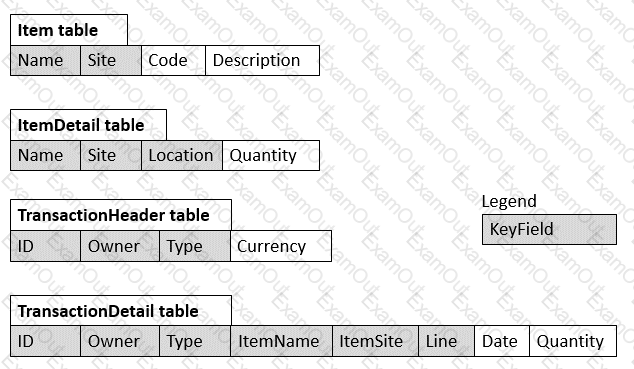You want to control how available dates are calculated for your vendor managed parts' supplies and demands.
In this situation, which control table would you need to configure?
You have defined a new namespace, TRM. You now want to define a new table that has a key reference field to the Mfg::ABCCode table. However, in the Add Input Field dialog,ABCCode does not appear.
What should you do to create the ABCCode key reference?
You need to create a workbook to allow users to manage their demand forecast by product, customer region, and distribution site. You also want to simplify user controls and use hierarchies to allow each user to make several selections in the same hierarchy.
In this situation, which two actions should you take? (Choose two.)
Choose 2 answers
At a customer site, there are multiple TimePhasedSafety records that are duplicated in the Baseline scenario. This is caused by the cross-scenario update from a child scenario.
What are two Kinaxis best practices for cross-scenario updates to prevent this situation? (Choose two.)
Choose 2 answers
You are building a worksheet for supplier collaboration and you want to assign a profile variable, Suppliers, so each user can see data for their own list of suppliers.
You include an expression in your sheet reporting the ScheduledReceipt table:
Order.Supplier IN ListAsSet($Suppliers)
Which string would you enter for the Suppliers profile variable for a user that should see data for suppliers A, B and C?

The tables shown in the graphic are from an SQL database. Shaded fields indicate key fields in SQL.
Which three actions should you take to design this data model in RapidResponse? (Choose three.)
Choose 3 answers
You have a hierarchy called PartFamily that is based on the PartCustomer table. There is a second hierarchy in use, also based on the PartCustomer table called PartPlanner. When the PartFamily hierarchy is used, performance is noticeably worse than when the PartPlanner hierarchy is used.
In this situation, which design issue would contribute most to poor performance?

Given the following order policies:
MultipleQty: 10
MinimumQty: 15
MultipleUsage: Use
MinimumUsage: Use
Referring to the graphic, what are the sizes of the three planned orders A, B, and C?

